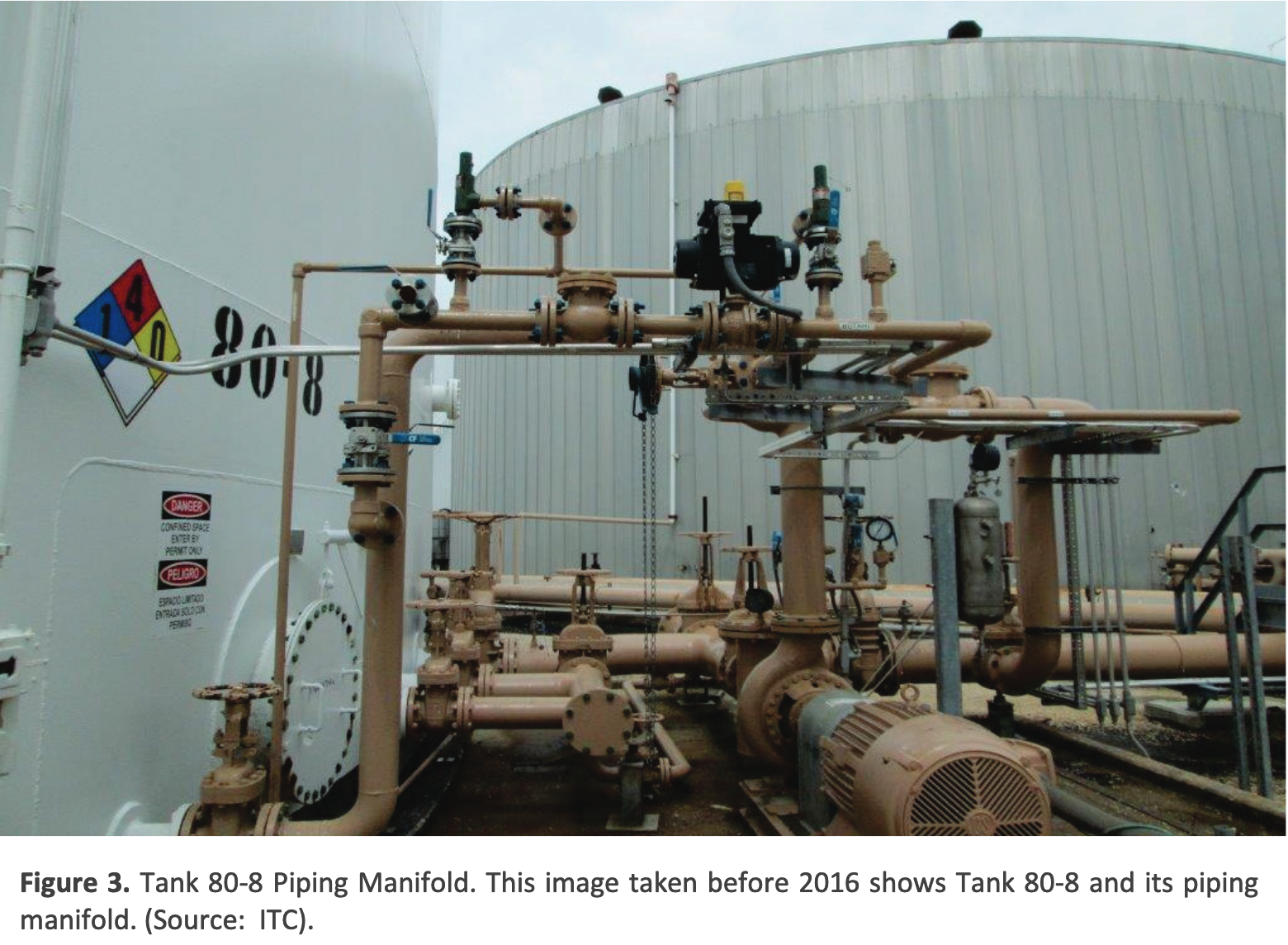This past week we got a “Factual Update” from the CSB on the Storage Tank Fire at Intercontinental Terminals Company (ITC) Terminal. After reading this update I was puzzled as to why the facts as we know them to date did not drive OSHA to open a NEP PSM inspection of the facility. Granted their tanks are atmospheric storage tanks and thus exempted under 1910.119(a)(1)(ii)(B); however, the Factual Update stated…
Tank 80-8 was an 80,000-barrel aboveground atmospheric storage tank… Tank 80-8 was leased to another company for naphtha storage and for naphtha-butane blending operations. ITC injects butane into the naphtha product using external piping and equipment (piping manifold) (Figure 3) to increase the octane level of the fuel product.

Butane is incorporated into Tank 80-8 via truck deliveries by way of a fixed butane injection system. The butane injection system originates at the truck loading rack, located south-west of the tank farm, and terminates at an injection point in the circulation line (piping manifold) at Tank 80-8. The control system is designed so that the butane injection operation cannot be started unless the Tank 80-8 pump is turned on to ensure that product is circulating. When this condition is met, an ITC operator can open an actuator valve by pressing the ON button at the truck loading rack to allow the butane unloading to begin. The butane is unloaded from the cargo tank truck, travels through 4-inch piping, which reduces to 2-inch piping, to the product circulation line where it combines with the existing naphtha product. The pump stays on throughout the unloading activity and for several hours afterward in order facilitate the mixing of naphtha and butane.
When I read this I immediately thought back to OSHA’s LOIs where they discuss the 1910.119(a)(1)(ii)(B) and how it applies to STORAGE ONLY in atmospheric tanks. To me, the process described at ITC is an actual process that involves injecting/mixing a CAT 1 Flammable Gas (Butane) into a CAT 2 Flammable Liquid (Naptha) and thus this “process” would indeed be a PSM covered process. After a few phone calls and e-mails I was directed to a 1995 OSHA LOI that addressed this specific type of set-up/process. OSHA determined that this set-up/process was NOT a PSM covered process…
NOTE: I do not agree with this interpretation and it should be held up as an example of “OSHA Minimums” and this incident should be a lesson in how trying to disect OSHA standards (the bare minimums) is not a good business practice!
